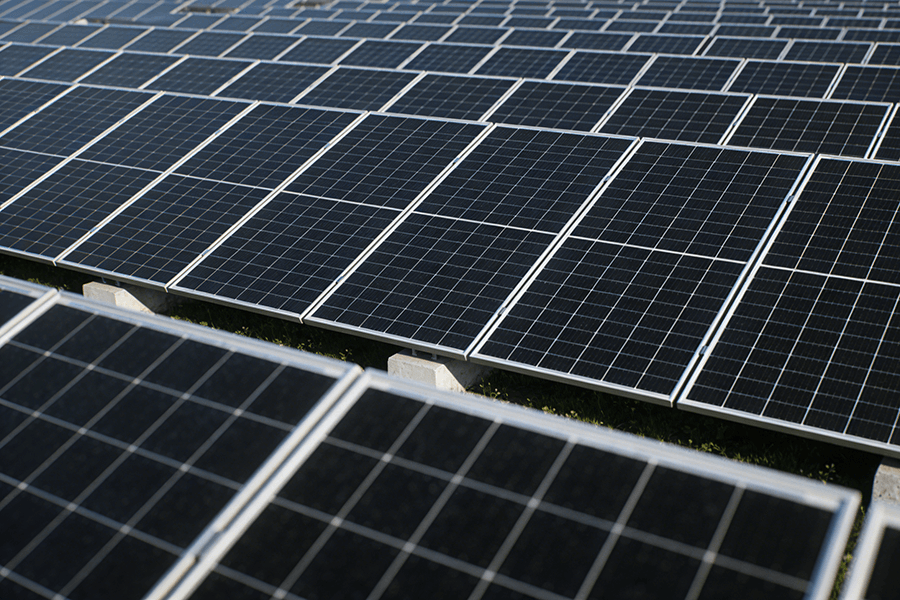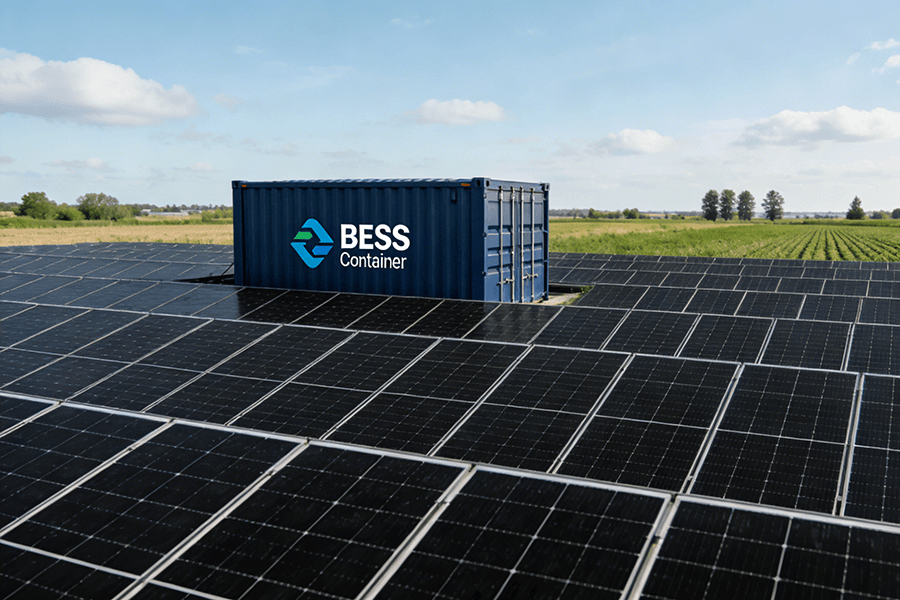1. Battery SOC
The state of charge of the battery refers to the available state of the remaining charge in the battery, which is often defined by the following formula,
Q rated is the rated charge capacity of the battery and Q remaining is the charge remaining in the battery.
If the Q rating is considered to be a fixed value, that is, the remaining charge margin is always equal to the rated capacity minus the discharged charge, then the SOC can be expressed by the following formula, Q discharge indicates the amount of charge that the battery has discharged after the last full charge.
The evaluation of the remaining power is one of the most important functions in the BMS, and many other functions in the system depend on the results of the evaluation of the remaining power. I personally think that if you want to correctly understand the concept of remaining power, you need to pay attention to the following issues:
1.1 There is a certain difference between the rated capacity Q and the actual maximum charge capacity Qtrue. The actual maximum capacity given by different manufacturers may be 115Ah or 105Ah, but the rated capacity is set to 100Ah. The rated capacity is not equal (this is why for cars with the same battery capacity, some cars feel that the power loss is slow and some feel that the power loss is fast), and as the battery ages, the maximum charge that the battery can actually release is also constantly changing. Small.
Therefore, the denominator in the calculated SOC value should be selected as the maximum charge capacity as possible, and the maximum capacity value of the battery needs to be calibrated frequently (this is why professionals are required to maintain the battery pack);
Secondly, if the maximum charging capacity cannot be obtained, use the rated capacity. At this time, the SOC value may be greater than 100%, which is entirely possible.
1.2 The remaining charge is affected by many factors and cannot be completely released.
In the past few years, I used mobile phones in my daily life. When the mobile phone was in a low battery alarm state, it would be turned off immediately when I made a call, but it could continue to stand by for several hours after it was turned on again;
By analogy to electric vehicles, the remaining power of the power battery at a certain moment is certain, but it may not be fully released with the power required by the electric vehicle. This shows that the battery Pack does not have no remaining charge, but that the remaining charge cannot meet the demand. Released with a large current, in fact, the maximum value that can be released by a fully charged battery is affected by the discharge rate, ambient temperature, etc., rather than a constant value.
1.3 It is not necessarily accurate to measure discharge with the amount of discharged charge Q. In actual use, discharge for a period of time before charging, and continue to use before it is fully charged. At this time, the measurement of formula 2 loses its meaning.
2. Battery health status SOH
Working principle of lithium-ion power battery – when the battery is charged, inside the battery, the lithium metal oxide of the positive electrode undergoes a chemical reaction to generate lithium ions. These lithium ions are carried by the organic electrolyte, pass through the separator, and move to the negative electrode.
The negative electrode graphite presents a layered structure with many micropores. Lithium ions reaching the negative electrode can be embedded in the micropores. The more lithium ions are embedded, the higher the charging capacity will be.
Due to the decrease of lithium ions in the positive electrode and the increase of lithium ions in the negative electrode during the charging process of the battery, it is manifested as a normal terminal voltage increase outside the battery.
When the battery is discharged, its internal chemical reaction is reversed. Lithium ions are deintercalated from the negative electrode and return to the positive electrode to combine with the lithium metal compound. The number of lithium ions in the positive electrode increases, and the corresponding decrease in the negative electrode reduces the energy of the battery. The voltage drops.
As the power battery is repeatedly charged and discharged, its internal electrode active materials and stored lithium ions are continuously consumed and lost, causing its capacity, charge, and discharge power, and other performances to decline continuously, and the battery gradually ages until it reaches the end of its life.
Measuring battery life can be divided into cycle life and time life;
The charging and discharging process of a battery becomes a cycle, and the number of cycles experienced during the period from the time the battery is manufactured until it is no longer used becomes the cycle life.
It is related to the manufacturing process of the battery itself and also has a lot to do with the working conditions such as charge and discharge depth, rate, and temperature in the entire life cycle (this kind of measurement method if the battery is installed on a hybrid vehicle, it will take only a few minutes The internal battery may have gone through many charge and discharge cycles. In this working condition, if you want to count the cycle life, it may only be a few days to reach the standard for battery replacement);
The number of days from the day a battery is produced until it is no longer used becomes the time life of the battery. Some of the same batch of batteries are used violently and not maintained, and some are used according to the optimal life strategy and maintained regularly. , and their lifespans vary widely.
The performance of the battery will gradually decline from the beginning of use, which is an irreversible process, so the higher the deterioration of the battery, the closer it is to the end of its life.
Occasionally, the battery will experience “sudden death”. Yesterday, the remaining capacity of the battery was measured at 90%, and today it was suddenly used in a harsh environment. Part of the lithium ions crystallized and pierced the diaphragm at low temperatures, and the remaining capacity dropped rapidly. The battery was scrapped. .
Some literature uses capacity decay and DC internal resistance spectrum as indicators of battery health, which I personally think is relatively accurate.
For the concept of SOH, “current battery capacity” is a widely used and widely recognized external characteristic evaluation index that best reflects the deterioration of power batteries.
The IEEE 1188-2005 standard and USABC also jointly recommend that “battery capacity” be used as a parameter to measure the deterioration degree of the power battery, specifically expressed by capacity decay, which can be defined as,
3. Battery Pack discharge depth DOD
If the change of SOC in the process of battery from completely empty to fully charged is recorded as 0~100%,
In practical applications, it is best to let each battery work in the range of 5% to 95%. Less than 5% may be over-discharged and higher than 95% may be overcharged, resulting in some irreversible chemical reactions that affect battery life.
At the same time, some and most of the time, the capacity and remaining power of each battery in the electric vehicle battery pack must be inconsistent. The main reasons are:
3.1 There will be inconsistencies in the battery manufacturing process,
As a chemical product, subject to the constraints of materials, processes and other factors, single batteries are inherently inconsistent, and different batches of battery raw materials may lead to inconsistencies in the chemical properties of battery materials;
Even with the same batch of raw materials, due to grinding, stirring, and spraying processes, the
particle size and conductivity of the electrode material may be inconsistent, and the SEI film formed near the electrode also has a certain randomness, resulting in inconsistent batteries.,,,,,
Only in the process of group matching, batteries with similar voltage and capacity should be selected as much as possible to form modules.
3.2 The difference in the working environment is also one of the important factors leading to the inconsistency of the battery
Even if the single battery is the same, the performance in different external working environments will be different, which will further promote the occurrence of inconsistency (heat conduction, air convection, and heat dissipation conditions in the battery pack cannot occur uniformly on each battery. ),
Due to chemical reactions and polarization internal resistance conditions, there is inevitably an endothermic and exothermic effect, which makes the temperature field distribution inside the battery pack uneven.
So the inhomogeneity can lead to inconsistency in the cell, and the inconsistency in the cell can also exacerbate the overall inhomogeneity.
Appropriately reducing the charge and discharge depth of the power battery (when the battery pack is not scrapped and the consistency of different monomers is large) can improve the safety of the battery and prolong the battery life.
If active or passive equalization is added during this process, it can improve safety, prolong life and retain more battery performance (as shown by a large number of theoretical analysis and experimental data).
Therefore, it is important for the battery pack to be self-balancing or to be maintained by professionals (including the necessary reduction of the depth of discharge DOD and output energy), which can not only improve the overall effective energy of the power battery pack, but also extend the use of the power battery pack to a certain extent life.
It is relatively difficult to formulate and implement an effective equalization control strategy. (Battery voltage alone is biased as the basis for equalization, that is, it is inaccurate to think that a battery with a higher voltage discharges charge and a battery with a lower voltage replenishes charge. There is no basis for judging the remaining battery power or SOC, voltage detection is simple, but accurate battery remaining power or SOC statistics are very difficult)
It can be seen from the above that the remaining capacity of the battery is limited by factors such as frequent charging and discharging of electric vehicles, battery aging SOH, etc., and there is no way to get it well;
It is also difficult to accurately estimate the SOC of each battery.
Even if the SOC value and remaining capacity of the battery are known accurately, it is not easy to transfer the power of the single battery with high power to the single battery with low power in the N batteries connected in series in the battery pack, under the constraints of cost and space, etc. ( If a poor balance strategy is formulated, the more balanced the more unbalanced the situation may appear).
4. Residual energy SOE
In electric vehicles, the estimation of the continued (remaining) mileage, the estimation of the remaining energy E remaining, and the estimation of the percentage of remaining energy SOE are considered to be equivalent to the evaluation of the remaining power, which is not correct.
When the remaining power is constant, the chemical energy carried by the battery is certain. However, what is related to the mileage of an electric vehicle is not only the remaining power of the power battery but the energy that the battery pack can output.
Under the condition that the remaining energy of the battery is the same, if it is discharged with different magnitudes of current, the energy that can be released by the single battery is different.
The electric vehicle is approximated as an equivalent circuit, the battery pack is represented in the dotted line, and RL represents the equivalent load during the driving of the vehicle.
Assuming that the external temperature is constant, the size of r in the figure remains unchanged. During the two working processes, the discharge current of the battery is inconsistent due to the difference in load, which is recorded as I1 and I2, and the energy consumed is I12r and I22r.
In the case of the same chemical energy of the battery, the energy consumed on the internal resistance is different, and the internal resistance consumption with a large current will definitely be greater, so the energy released will be less.
In the same way, if the current remains constant and the temperature changes, the internal resistance will also change accordingly. The energy consumed on the internal resistance is also unclear, and the energy released by the battery is also an uncertain electric power.
The above example shows that the remaining energy is related to the remaining mileage.
The conclusion that can be drawn is that the maximum energy released by the battery pack changes with the battery working conditions (electric vehicles face different situations such as accelerating uphill, etc.) and external conditions (temperature, humidity, etc.).
However, the maximum amount of charge that the battery pack can release is determined and will not change with future working conditions. Similar to fuel vehicles, the amount of fuel in the fuel tank is confirmed, but the specific mileage that can be driven needs to be determined according to the working conditions and weather conditions at the time.




